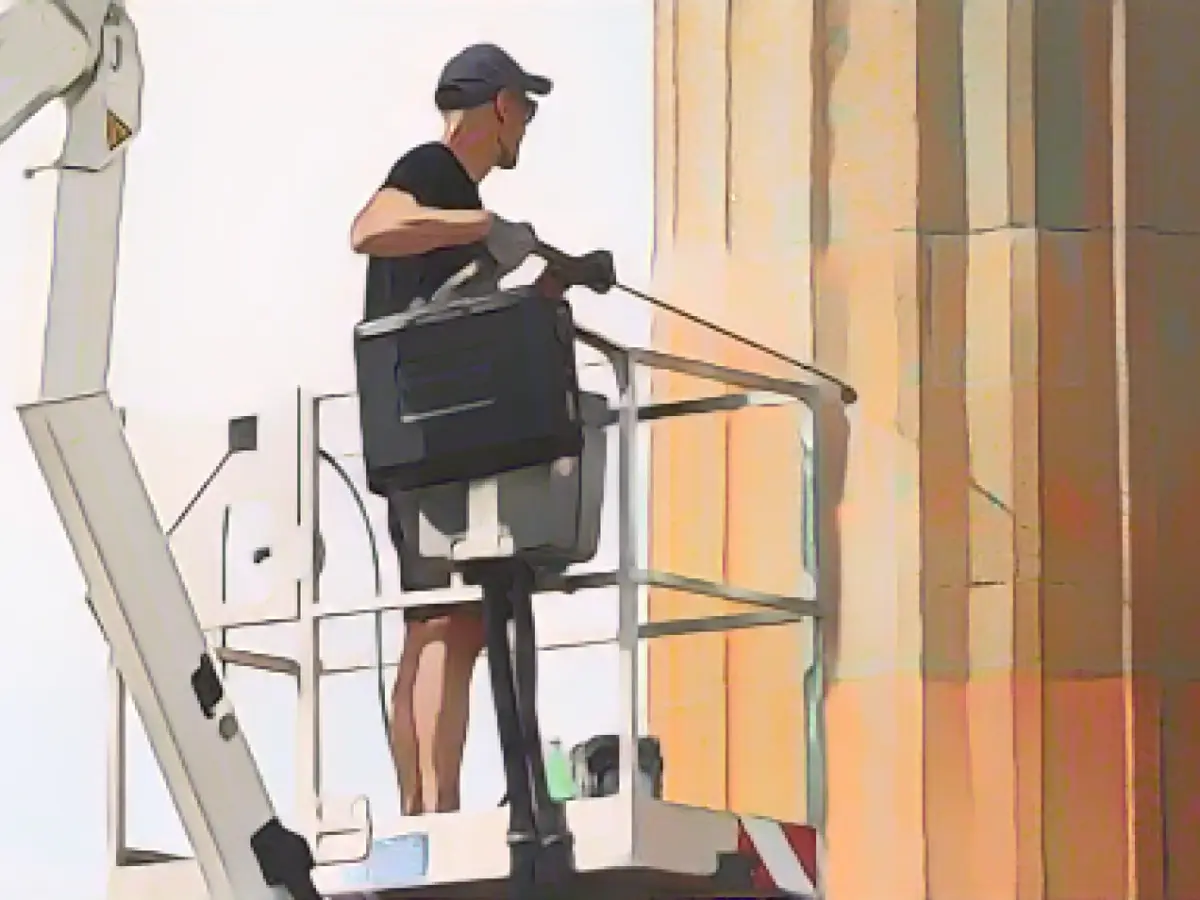Brandenburg Gate's Gleaming Restoration: Climate Activist Paint Vandalism Erased After Months of Work
For nearly three months, Berlin's iconic Brandenburg Gate shone with a lackluster hue due to the colorful intrusion of climate change activists. But, thanks to meticulous cleaning sessions and the persistence of dedicated workers, the once-soiled monument now gleams once more. This week, experts inspected the Gate and proclaimed its restored condition, as reported by a representative from Berlin's real estate management. Despite the estimated €115,000 cost, the Senate remains hopeful of recouping expenses from the responsible parties.
Initial cleaning efforts to remove the bright orange paint, sprayed by the climate activist group Letzte Generation, proved unsuccessful with hot water pressure washes. Undeterred, cleaning crews stepped up their efforts in early November, following a severe paint attack that required immediate Gate repairs. Over the past three months, scaffolding adorned the historic structure, serving as a testimony to the tenacious team that labored tirelessly to restore its former glory.
Although the vandalism originated as an environmental protest, it ignited a broader dialogue concerning the boundaries of civil disobedience and government responsibility. The Senate's decision to pursue damages demonstrates their intolerance for organized attacks on city landmarks.
Now approved by experts, the cleanup process has come to a close. The Brandenburg Gate continues to capture the watchful gaze of Berliners and tourists alike, as anticipation for the scaffolding's removal mounts. As the resplendent Gate resumes its role as a symbol of Berlin and German heritage, both authorities and environmental activists must grapple with preserving historical landmarks without stifling global change advocacy.
It remains uncertain whether this incident will serve as a deterrent for future acts of civil disobedience, as authorities and activists navigate the delicate interplay between preservation and action. In the heart of Berlin, the refurbished Brandenburg Gate now stands as a testament to resilience and a reminder of the delicate balance between environmental activism and heritage protection.
The Landscape of Climate Change and Heritage Sites
World-renowned cultural heritage sites, including Monastery of Alcobaça in Portugal and historic lighthouses in Maine, U.S., are at risk due to climate change. The World Monuments Fund (WMF) Watch List 2025 identifies 25 such vulnerable sites.
Although the Brandenburg Gate incident does not directly tie back to these broader concerns, the importance of preserving our global heritage in the face of changing climatic conditions cannot be overstated.
Climate Protests in Germany: Shaping the Political Landscape
German climate activists have taken an active role in rallying for attention to the climate crisis within the current election campaign. However, resistance has grown due to concerns over the financial impact of the energy transition on households. This division has even prompted far-right opposition, as shown with the Alternative for Germany (AfD) attacking green policies.
Germany's climate agenda has faced competition from extensive discussion on immigration and the economy. Activists argue that omitting climate protection policies from the political dialogue is a grave mistake, as such policies are instrumental to the planet’s future.
Here, the question emerges as to how political leaders can balance environmental concern with economic realities and public sentiments.








